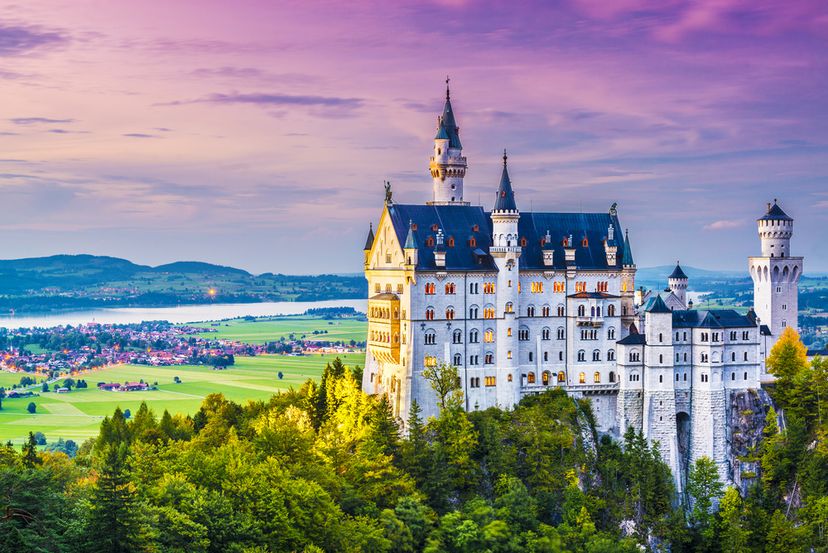
Visiting a city with as rich a history as Munich can be overwhelming for visitors, with so many sights to choose from and seemingly so little time. The good news is that many of Munich’s historic landmarks are located in the Old Town and are within walking distance of one another. From expansive parks, to fairy tale castles to Oktoberfest, Munich has a variety of attractions to keep travelers of all ages and interests entertained. Below is a look at 10 of the most compelling places to visit in the Bavarian capital.
Advertisement
10. Deutsches Museum
The world’s largest museum of science and technology, the Deutsches Museum (meaning German Museum) is home to 28,000 exhibited objects from some 50 different fields of science and technology. The museum is the largest in Munich, and has approximately 1.5-million pass through its doors annually. The main site of the museum is actually on a small island in the Isar River. In addition to the main island location, the museum has two more branches in Munich and one in Bonn.
A prominent display featured in the collection is a rare Horton flying wing glider built in the 1940’s and restored from surviving parts. A unique collection of German vertical take off and landing planes developed in the 1950’s and 1960’s are also on display, as well as Russian planes taken following the reunification of the country. The newest branch of the Deutsches Museum focuses on transportation technology, while the branch in Bonn focuses specifically on German technology, science and research following 1945.
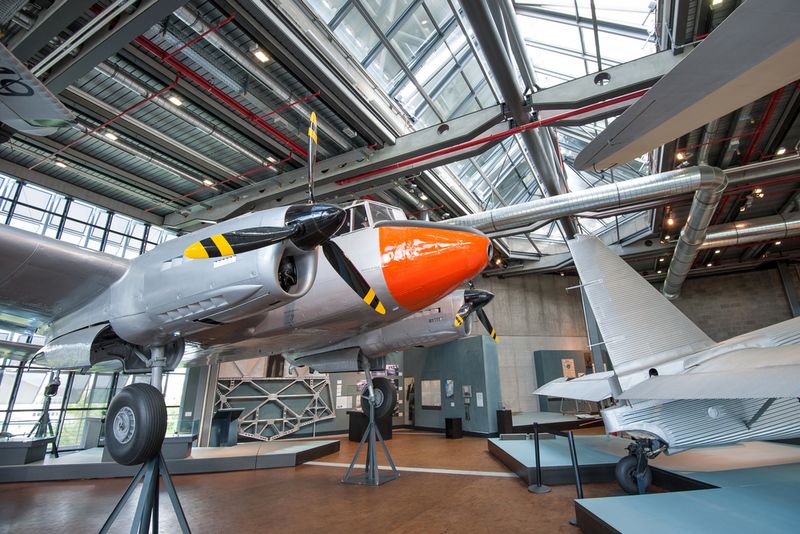
Advertisement
9. BMW Museum
The BMW Museum is an automobile museum located near the Olympiapark and deals specifically with the manufacturing history of German automaker BMW. The museum opened in 1973, shortly after the Summer Olympics that year and underwent construction from 2004 through 2008 during the development of the BMW Welt directly opposite the museum.
The unique design of the building has led to it being nicknamed the salad bowl or white cauldron due to its silver futuristic design. Visitors ascend on a spiral upwards inside the building to visit the exhibits that are each located on four “islands” inside the building. A small movie hall combined with a number of interactive exhibits explains the technology further before an escalator finally brings visitors back to the ground floor. The museum demonstrates BMW’s technical development through history, and contains engines, turbines, aircraft, motorcycles and a variety of other different vehicles.
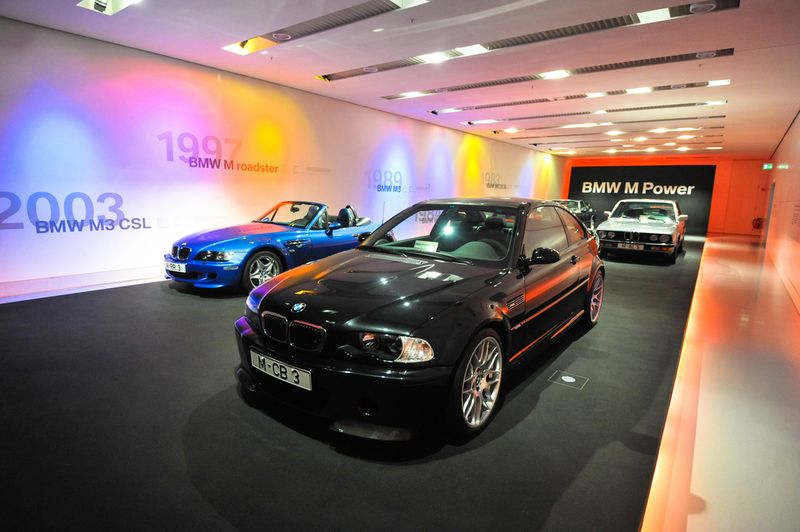
Advertisement
8. Neuschwanstein Castle
Neuschwanstein Castle (“New Swanstone Castle” in English) is a 19th century Romanesque Revival palace situated upon a rugged hill above the village of Hohenschwangau, just outside of Munich. The palace was constructed by Ludwig II of Bavaria as a personal retreat, and an homage to Richard Wagner. Ludwig actually paid for the development of the castle from his own personal fortune and through extensive borrowing rather than using the funds of his people.
Initially developed as a picturesque fairy tale getaway for the reclusive King, the palace quickly opened to the public following his death in 1886. Since then, more than 61-million people have visited the castle, with an average around 1.3-million a year. The castle features prominently in a number of movies, and served as the inspiration for Disneyland’s famous Sleeping Beauty Castle. Due to its secluded location, the palace remained undamaged during World War 2, and remains in extraordinary condition to this day.
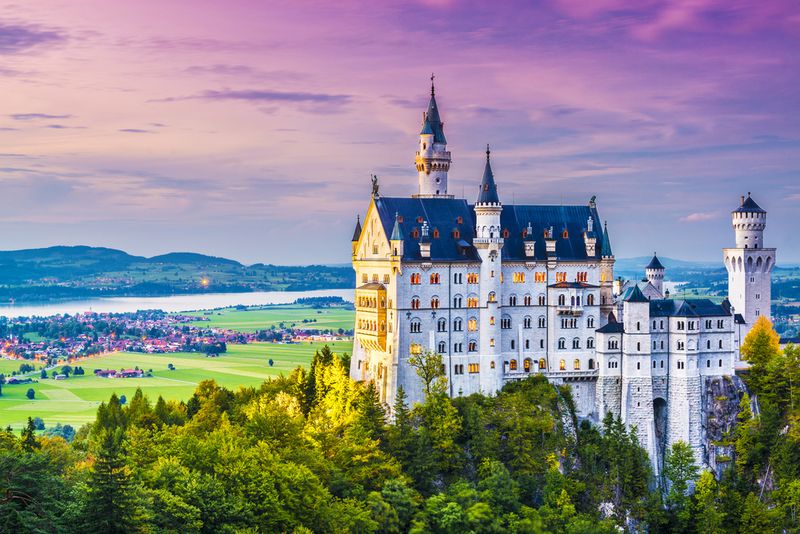
Advertisement
7. Allianz Arena
The 75,000 plus seat Allianz Arena is the third largest arena in Germany. Both professional soccer clubs in Munich call the Allianz Arena home, though Bayern Munich, one of the biggest soccer clubs in the world owns the stadium after buying out second tier TSV 1860 Munich’s shares in 2006. The stadium is known for its exterior of inflated plastic panels, and was the first stadium in the world with a full color-changing exterior.
The panels are lit differently depending on which team is hosting the game inside the stadium, with red representing Bayern Munich, blue for TSV and white for when the reigning World Cup champion German national team hosts. Not only does the stadium act as a cathedral for the fans, but also as a shrine with the Bayern Munich FC museum being located inside the stadium as well. The partial roof over the stadium provides shelter to spectators, though some unruly winds can still blow rain in an unfavorable direction.
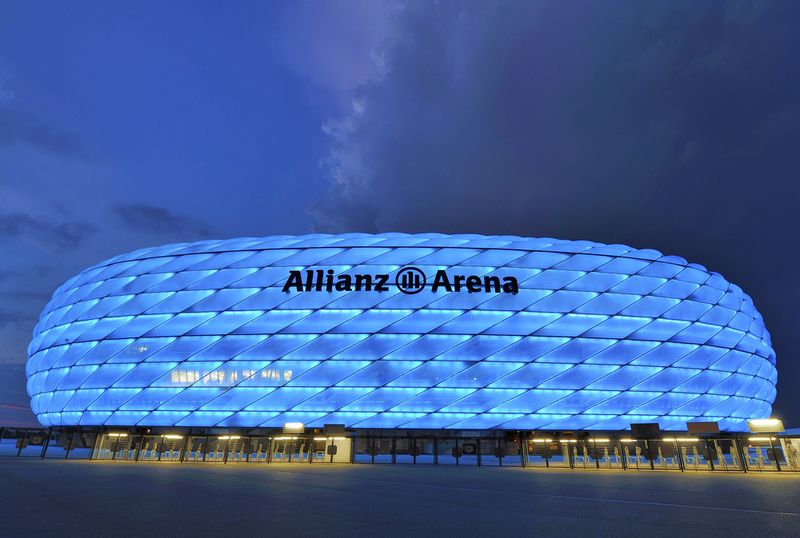
Advertisement
6. Kunstareal
The Kunstareal (meaning “art area” in English) is divided up into three different museums: the Alte Pinakothek (“Old Pinakothek” in English), the Neue Pinakothek and the Pinakothek der Moderne. The Alte focuses on European art from the 13th and 18th centuries and is considered to be one of the most important collections of art from this time period in the world. The Neue (New) examines European art from the 18th and 19th centuries, and is of equal prestige for this time period.
The Pinakothek der Moderne includes exhibits of modernism since the 1900’s, contemporary art from the 1960’s as well as new videos, photos and other media from more recent times. The Kunstareal also is home to the Museum Brandenhorst, Glyptothek, Lenbachhaus, Bavarian State Collection of Antiques and the Egyptian Museum. The Paleontology Museum of Munich and Geological Museum are also located nearby to the Kunstareal.
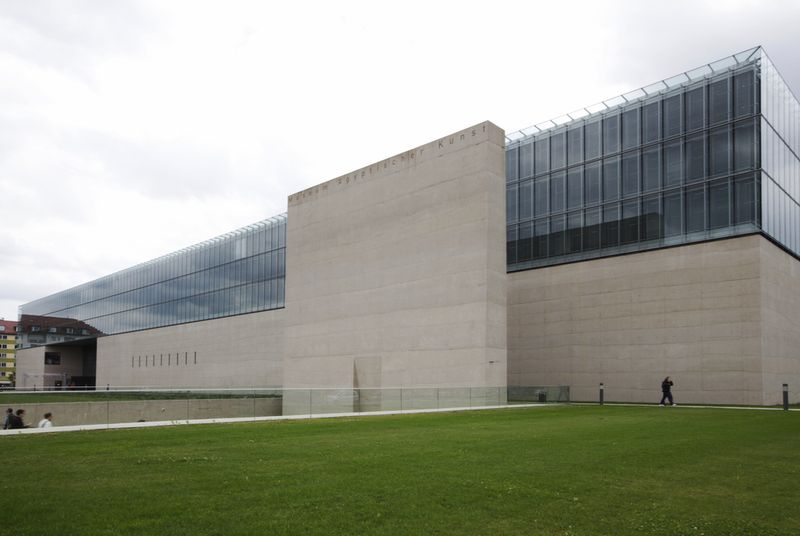
Advertisement
5. Englischer Garten
A large public park in the center of Munich, the Englischer Garten (“English Garden” in English) stretches from the city center to the northeastern boundaries of the city. It was created in 1789 and has an area of 1.4 sq mi (3.7 km2), larger than that of New York’s Central Park. The name refers to the informal style of landscaping that was popular in Britain from the middle of the 18th century to the early 19th century.
One of the more unexpected sights in the garden is a Japanese teahouse built during the Summer Olympics in 1972. The park has roughly 75 km of roads, footpaths and bridle paths, with over 100 bridges throughout the area. Visitors can even go surfing in the park, as one of the 8.75 km of streams in the park features a standing wave produced by a pumping mechanism. Signs warn visitors that the surfing should be left to those with experience, however.
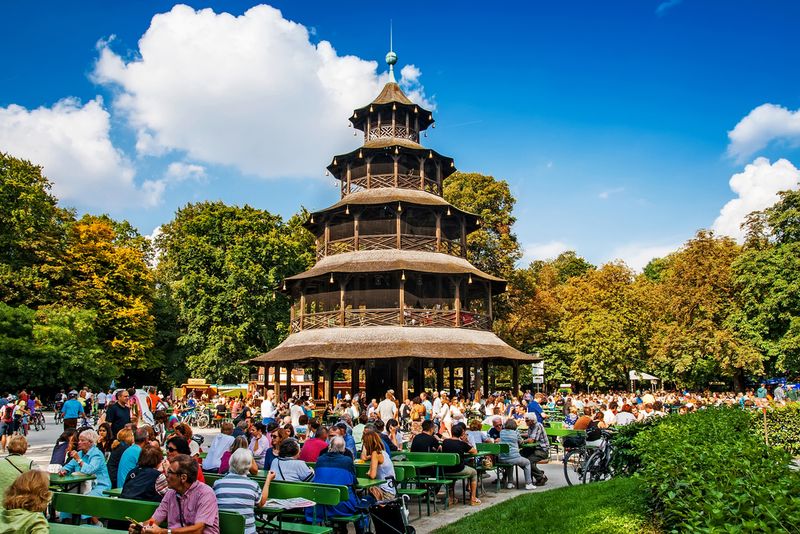
Advertisement
4. Marienplatz
Marienplatz (“Mary’s Square” in English) is a central square in the heart of Munich, and has served as the city’s main square since 1158. Once upon a time during the Middle Ages, markets and tournaments were held in the square. Today, Marienplatz is dominated by the Neues Rathaus (New City Hall) on the north side.
The Glockenspiel in the tower of the new city hall was inspired by these medieval tournaments, and re-enacts famous local events on a daily basis acted out by life size figurines (including a joust). Also in the Marienplatz is Mary’s Column, erected in 1638 to celebrate the end of Swedish occupation during the Thirty Years’ War topped with a golden statue of the Virgin Mary standing on a crescent moon. At each corner of the base is a statue of a putto, each depicted fighting a different beast to symbolize the difficulties the city overcame in its history, including war, pestilence, hunger and heresy.
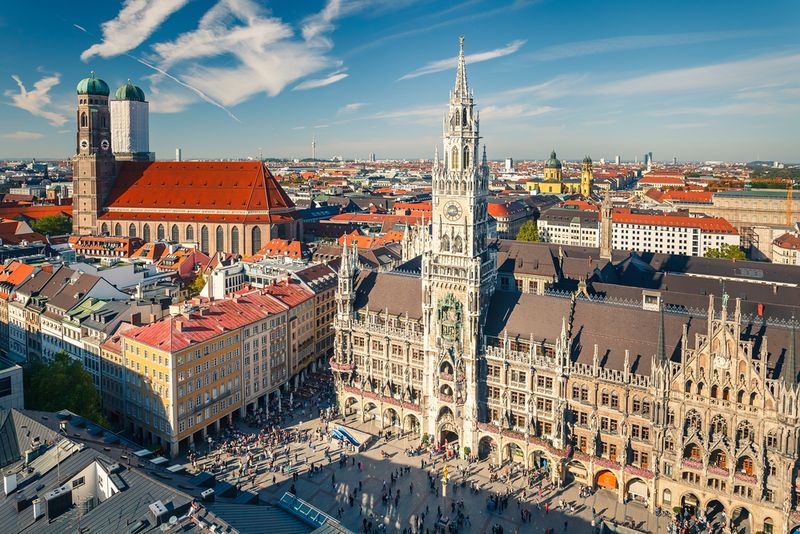
Advertisement
3. Dachau Concentration Camp
The first of the concentration camps opened by the Nazi’s and intended to hold political prisoners, the Dachau Concentration Camp is located on the grounds of an abandoned munitions factory about 10 miles northwest of Munich. Opened in 1933 by the notorious Heinrich Himmler, the purpose of Dachau was expanded to include forced labor, and eventually, the imprisonment of Jews, ordinary German and Austrian criminals as well as individuals from nations occupied or invaded by Germany.
There were about 32,000 documented deaths at the camp, with potentially thousands more that went undocumented. In the post war years, the camp saw use holding SS members awaiting trial, ethnic Germans who had been expelled from Eastern Germany and awaiting resettlement and even as a US military base before the camp finally shut its doors in 1960 for good. There is no charge to visit the camp, and the experience provides a powerful reminder of the freedoms enjoyed in the world today.

Advertisement
2. Frauenkirche
The Frauenkirche (“Cathedral of Our Dear Lady” in English) serves as the cathedral of the Archdiocese of Munich and Freising, and is the seat of the Archbishop. The cathedral is a noted landmark and symbol of Munich, as the church tower is widely visible due to local building height limits. The south tower of the cathedral is open to the public and provides visitors who are willing to climb the staircase a unique view of the city and of the nearby Alps.
The capacity of the Frauenkirche is an astonishing 20,000 people, and Catholic mass is held regularly. Given that the population of the city was around 13,000 when the cathedral was constructed, the large capacity was certainly ambitious. Unfortunately, much of the interior was destroyed during World War 2, though an attraction that survived is the Teufelstritt (Devil’s Footstep) at the church’s entrance, with a number of legends as to how the footmark came to originate.
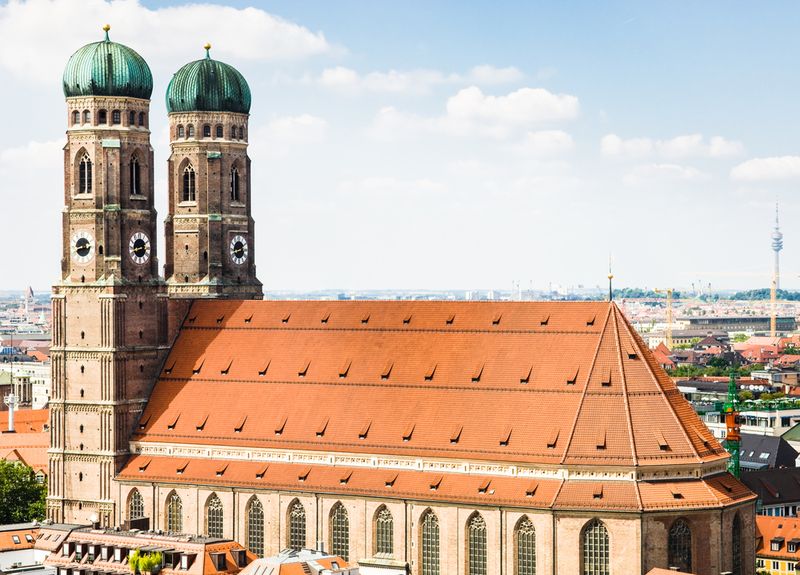
Advertisement
1. Oktoberfest
The world’s largest funfair held annually in Munich, Oktoberfest is a 16-day festival that runs from late September through the first weekend in October. Some 6-million people attend the event annually from all across the globe, and serves as an important part of Bavarian culture since its inception in 1810.
Statistics from 2013 show that the 6.4-million visitors consumed 6.7-million liters of refreshing Oktoberfest beer during the festival that year, while enjoying a number of attractions such as amusement rides, side-stalls, games and a wide variety of traditional Bavarian dishes like Hendl (roast chicken), Schweinbraten (roast pork) and of course, Saurkraut. Despite the party atmosphere, steps have been taken in recent years to help cater to all demographics, with noise limitations during certain hours to create events that are friendlier towards the older and family crowds. According to the strict regulations, there are only six breweries that are officially allowed to sell their product during the festival, which are: Augustiner-Brau, Hacker-Pschorr-Brau, Lowenbrau, Paulaner, Spatenbrau and Staatliches Hofrau-Munchen.
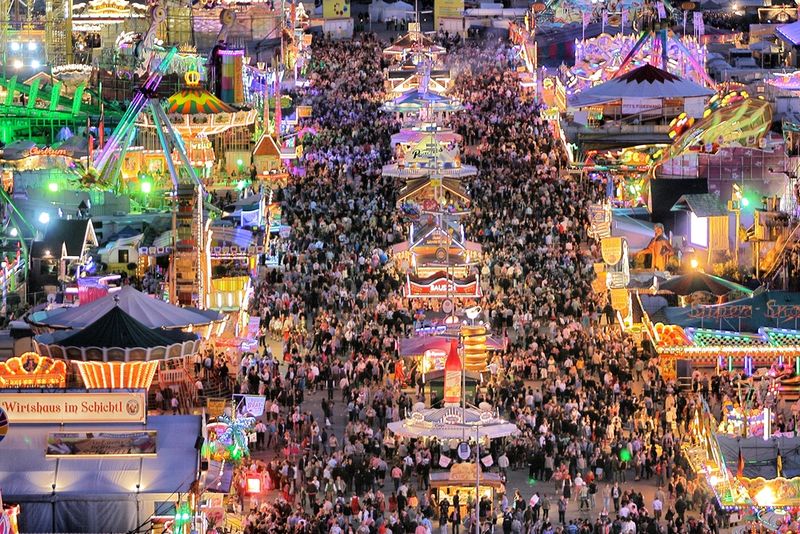
Advertisement